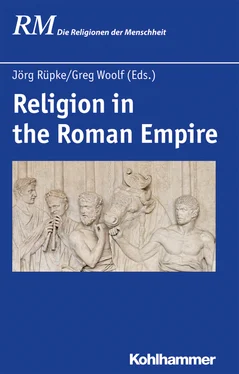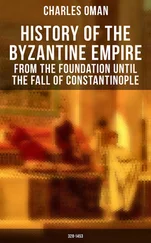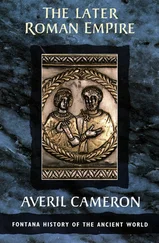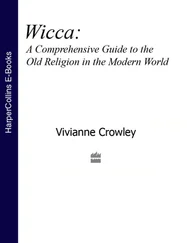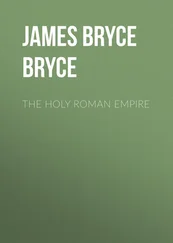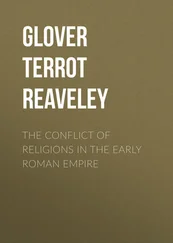Religion in the Roman Empire
Здесь есть возможность читать онлайн «Religion in the Roman Empire» — ознакомительный отрывок электронной книги совершенно бесплатно, а после прочтения отрывка купить полную версию. В некоторых случаях можно слушать аудио, скачать через торрент в формате fb2 и присутствует краткое содержание. Жанр: unrecognised, на английском языке. Описание произведения, (предисловие) а так же отзывы посетителей доступны на портале библиотеки ЛибКат.
- Название:Religion in the Roman Empire
- Автор:
- Жанр:
- Год:неизвестен
- ISBN:нет данных
- Рейтинг книги:5 / 5. Голосов: 1
-
Избранное:Добавить в избранное
- Отзывы:
-
Ваша оценка:
- 100
- 1
- 2
- 3
- 4
- 5
Religion in the Roman Empire: краткое содержание, описание и аннотация
Предлагаем к чтению аннотацию, описание, краткое содержание или предисловие (зависит от того, что написал сам автор книги «Religion in the Roman Empire»). Если вы не нашли необходимую информацию о книге — напишите в комментариях, мы постараемся отыскать её.
This volume provides a compelling view of central aspects of cult and religion in the Roman Empire, among them the distinction between public and private cult, the complex interrelations between different religious traditions, their mutually entangled developments and expansions, and the diversity of regional differences, rituals, religious texts and artefacts.
Religion in the Roman Empire — читать онлайн ознакомительный отрывок
Ниже представлен текст книги, разбитый по страницам. Система сохранения места последней прочитанной страницы, позволяет с удобством читать онлайн бесплатно книгу «Religion in the Roman Empire», без необходимости каждый раз заново искать на чём Вы остановились. Поставьте закладку, и сможете в любой момент перейти на страницу, на которой закончили чтение.
Интервал:
Закладка:
Sanctuaries, whether dedicated to local deities or empire-wide cults, would have borne the imprints of local ways of interpreting how a sanctuary should look 10and what it needed to embody. Sanctuaries did not even need to have been architecturally defined. Sacred forests, groves, lakes, mountains and caves are well known to us from ancient sources and such spaces could constitute important religious spaces which held sanctuary-like properties, such as Mount Olympus in Greece 11or the Afqa grotto in Lebanon 12or even gardens. 13Nature could constitute sanctuaries as well, although not being defined solely by architecture, they were often associated with some architectural elements underlining the sacredness of the place (Figs. 2. and 4). Often myths evolving around the natural environment and the topography of a landscape would shape the materialisation of these perceptions. An example of such personifications of environment and landscape is the case of Tyche of Antioch, who firmly places her foot on the river Orontes to hold down the dangers presented by the flowing river. 14The city goddess wins, so to say, over the god of the river—although he is acknowledged as a god. Power relationships therefore also must be taken into consideration when speaking about sanctuaries and their locations in the physical landscapes—both in- and outside of cities. However, the Tyche of Antioch must also be set within a wider chronological framework and needs to be seen within the frame of time as an older goddess, whose image already in the Hellenistic period was prevailing. To be old, to have existed or be able to claim existence back in time, was also a feature which gave power and acknowledgement to cults and deities in the Roman period. In particular the 2nd century A.D. saw a surge in the invention and reinvention of cults across the Empire, where tracing back local deities to past times became a trend. 15
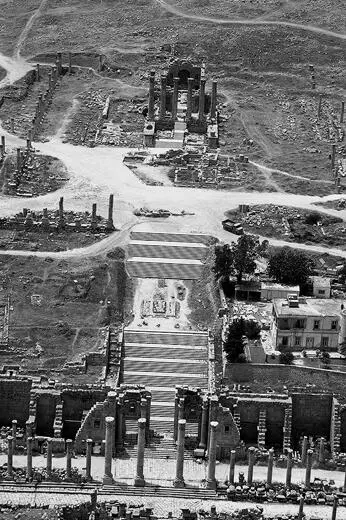
Fig. 11:The temple of Artemis in Gerasa/Jerash (Jordania), constructed during the 2nd century A.D. (APAAME_20100601_SES-0481.dng, Arial photographic archive for the archaeology of the Middle East, APAAME).
We also know that sanctuaries could work as banks and treasuries. Inscriptions tell us about deposits made there as well as large monetary gifts given to sanctuaries at various points in time. 16Exactly how such mechanisms worked is not known. 17To return to power relationships, at Baalbek in Lebanon for example, a string of sanctuaries were monumentalised in the Roman period creating the largest sacred precinct in the Roman world. The most impressive of these was the extensive Sanctuary of Jupiter Heliopolitanus, which dominated the plain in front of another sanctuary located on the hill. The so-called temple of Bacchus and temple of Venus were located close to the Jupiter Heliopolitanus sanctuary as well. 18While we know that Baalbek was important, not only locally, but also on an imperial scale, not least in the period when emperors of Near Eastern descent, such as Elagabalus, ruled the Roman Empire, it is still puzzling and important to ponder on the fact that religiously important spaces, and in this case one of the most spectacular sacred spaces in the Roman Empire of this period, were produced outside of Rome. Nonetheless the dynamic interaction with Roman religion—and local religion—was obvious in the names of the deities worshipped in the sanctuaries there.
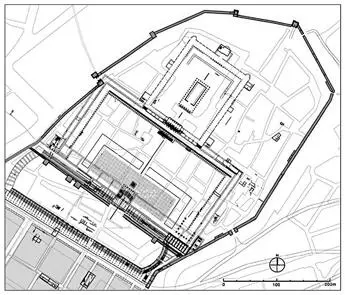
Fig. 12:The forum with the sanctuary of the province Hispania in Tarraco/Tarragona (Spain) on three terraces with circus, square and temple for the emperor’s cult from the Flavian period (2nd half of the 1st century A.D.). (Pensabene and Mar 2010, Fig. 1).
In the city of Gerasa in the Decapolis region, this middle-sized provincial city in the 2nd century A.D. produced the second largest sanctuary in the Roman world, that of its city patron, Artemis. 19This sanctuary was never entirely finished for reasons unknown. But the unfinished sanctuary would have made an imprint on the central urban landscape. The Artemis sanctuary (Fig. 10) might have stood in competition with the other monumental sanctuary of the city, that of Zeus Olympios, and therefore in the case of Gerasa the continuous development of the main sanctuaries of the city impacted the entire layout and development of the city itself. 20The sacredness was present all over—although perhaps not practiced all the time. Gerasa’s urban landscape is a good example of how sacred architecture can dominate an entire city and how a middle-sized city through investment in the monumentalisation of a sanctuary came to hold the second largest sanctuary in the Roman world.
In Rome, sacred spaces were also numerous: altars, temples and architecturally defined sanctuaries were integrated parts of the urban landscape of the largest city, million-scale in terms of inhabitants, of the Empire. 21Apart from being the largest city, Rome was also the city which religiously speaking was one of the most important in imperial times. The main cults of the Empire were celebrated there and the annual calendars tell us about these festivals and celebrations around which urban life also evolved. 22The organisation of urban life was to a large extent structured around the religious life and not least the religious actions, which the religious life demanded to be fulfilled. This structure of and emphasis on the carrying out of religious activities had been boosted by Octavian, later Augustus, who made it one of his main principles to restore the Roman religion in the urban centre and across the Empire and used religion in order to establish the Roman sovereignty in the Mediterranean region. 23Here the layout and constructions of sanctuaries also held an important place and the Augustan period saw a huge increase in the building of such sanctuaries across the Empire. Another means through which order was restored was the imperial cult. 24While deities might be worshipped both in the sanctuaries dedicated to them, they could also be worshipped in other places. However, some deities were more locally bound than others, but still came to hold importance in a wider region or even empire-wide. 25The sanctuary of Jupiter Dolichenus in Anatolia is one example of a deity 26whose importance spread—most likely with that of the Roman army—across the entire Empire. 27Another example of a localised but important cult is that of Dea Syria. We know that she held a monumental sanctuary in Heliopolis in Syria of which Lucian wrote informing us about the religious practices, which took place there at different points in time over the year. Although it has been doubted how realistic his descriptions are, it has also been argued that we need to take this text more seriously than it has been in earlier research. 28
In recent years more emphasis has been put on understanding sacred spaces through the intertwined and complex source material, which often is full of lacunae and need to be patched together. It remains important to underline that reconstruction of religious practices and therefore religious life in antiquity is still a challenge. Issues, however, pertaining directly to the ways in which we can gain insight into various aspects of religious life which took place in sacred spaces, have been tackled through breaking down parts of religious life and tackling it by thematic approaches. 29
While architectural expressions of religious life, such as sanctuaries, certainly present us with the most obvious and visible sources through which we can begin to reconstruct religious practice in the Roman period, there are other important groups of evidence to take into consideration. These include inscriptions, written texts as well as the objects associated with religious life and sanctuaries in particular. While architectural layouts easily become subjects of over-interpretation in attempts to claim universal elements in religious life (which in fact might have been present, 30but cannot be verified through architectural analysis), texts, inscriptions and objects give us the opportunity to investigate other aspects of religious life, which took place in sanctuaries and often give insight into the more subtle nuances of the practices performed there. The now well-researched and so-called banqueting tesserae from the oasis city in Palmyra, which served as entrance tickets to religious banquets held in the city’s sanctuaries, are good examples of practices connected to the religious life of the city, which are not visible in the archaeological architectural record. 31These banquets are only visible to us through the tesserae, which in abundance tell us about these events, give insight into who invited and sponsored such events (priests and groups of priests), as well as into the multifaceted ways in which religious iconography was shaped in order to make each series of invitations distinct from each other, but recognizable overall, as part of a Palmyrene tradition central to the way in which religious life was practiced in Palmyra in the Roman period. Here again the Roman calendars must be mentioned as sources for religious practices as well as inscriptions stemming from sanctuaries and dedications made in these spaces and texts telling us about festivals and processions. 32
Читать дальшеИнтервал:
Закладка:
Похожие книги на «Religion in the Roman Empire»
Представляем Вашему вниманию похожие книги на «Religion in the Roman Empire» списком для выбора. Мы отобрали схожую по названию и смыслу литературу в надежде предоставить читателям больше вариантов отыскать новые, интересные, ещё непрочитанные произведения.
Обсуждение, отзывы о книге «Religion in the Roman Empire» и просто собственные мнения читателей. Оставьте ваши комментарии, напишите, что Вы думаете о произведении, его смысле или главных героях. Укажите что конкретно понравилось, а что нет, и почему Вы так считаете.
